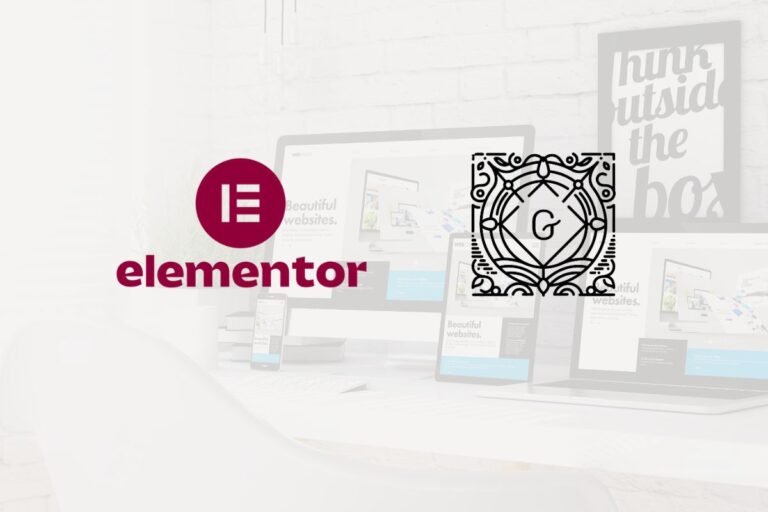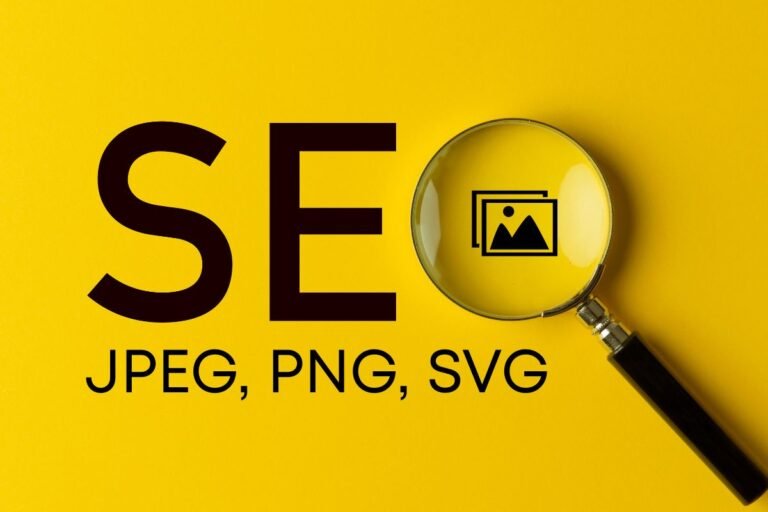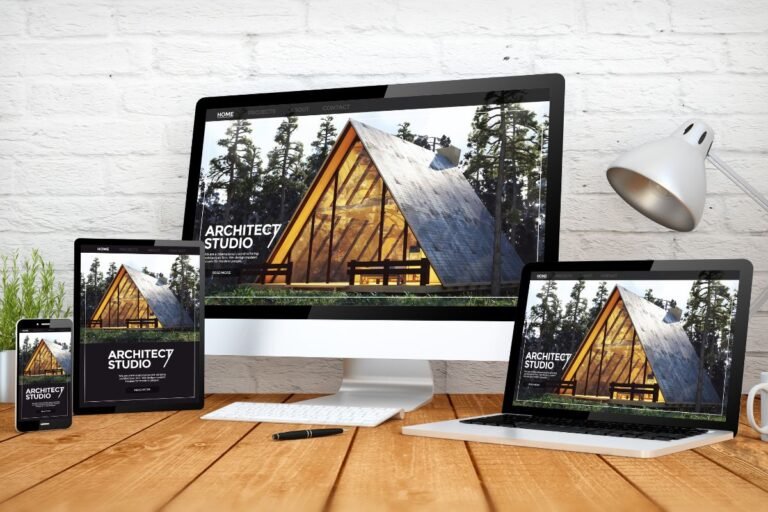If you’re weighing custom WordPress development vs themes, you’re really asking what you value most: speed to launch, budget, flexibility, or long‑term control. Both paths can produce a fast, beautiful, search‑optimized website. Both can also go sideways if you choose the wrong approach for your goals. In this guide, you’ll learn what “custom” actually means today (in the era of block themes and the Site Editor), where themes shine, when custom pays off, and how to estimate true cost of ownership, including performance, SEO, accessibility, security, and future scalability. By the end, you’ll have a clear decision framework, practical tool recommendations, and a safe migration path either way.
What We Mean By “Custom” Versus “Theme-Based”
Custom Development
“Custom” isn’t a single thing. It’s a spectrum, from a bespoke theme coded from scratch to a block theme tailored with a design system, custom blocks, and minimal plugins. Typically, custom WordPress development means:
- A unique design system and component library (colors, spacing, typography)
- Purpose-built theme or block theme, sometimes using a framework (e.g., Genesis, Sage/Bedrock) or a starter like Theme.json-first setups
- Custom post types (CPTs), taxonomies, and bespoke blocks/patterns
- Minimum plugin footprint: functionality is modular and version-controlled
- Engineering workflows (Git, staging, CI/CD, Composer, WP‑CLI)
The upside: precision control of performance, SEO, accessibility, and editor experience. The trade-off: higher upfront cost and a need for ongoing maintenance.
Theme-Based Builds
Theme-based builds start with a prebuilt theme and adapt it to your brand using the Customizer/Site Editor, patterns, a page builder (if needed), and plugins. Common options include Astra, GeneratePress, Kadence, Blocksy, and block themes from major shops. Page builders like Elementor and Divi still have large ecosystems, though many teams now favor native blocks for performance and longevity.
You’re leveraging a mature, well-documented foundation with lots of templates and features out of the box. You’ll usually go live faster at a lower cost, ideal for startups, small businesses, and sites with conventional requirements.
Hybrid Approaches (Child Themes, Custom Plugins, Block Themes)
Most high-performing sites in 2025 are hybrids:
- Child themes on a lightweight parent (e.g., Astra/GeneratePress/Kadence) with a custom plugin for business logic
- Block themes with custom patterns and a few bespoke blocks (via Advanced Custom Fields [ACF] Blocks or native block scaffolding)
- Minimal builder usage (if any) for edge cases
Hybrids strike a balance: speed to launch, an excellent editor experience, and enough control to avoid theme lock‑in.
Pros And Cons Compared
Custom Development: Advantages And Drawbacks
Pros:
- Performance control: You ship only what you need, lean CSS/JS, no builder bloat, clean HTML, and fast Core Web Vitals.
- Tailored SEO and content modeling: Custom post types, fields, and patterns mirror your business, making content scalable and consistent.
- Accessibility by design: You can bake WCAG 2.2 AA into components and templates.
- Future flexibility: Easier to extend with APIs, ecommerce, or headless without replatforming.
- Ownership: No reliance on a vendor’s update cycle or licensing.
Cons:
- Higher upfront cost and longer timeline
- Requires developer availability for enhancements
- More responsibility for updates, testing, and security
Best for: Brands with unique UX, complex content models, high traffic, or long-term product roadmaps.
Theme-Based Builds: Advantages And Drawbacks
Pros:
- Speed to launch and lower price: Prebuilt templates, patterns, and demos shorten design/build time.
- Friendly editing: The Site Editor and pattern libraries make non-dev edits safe and fast.
- Ecosystem: Themes like Astra, GeneratePress, Kadence, and Blocksy have rich documentation and compatible plugins.
Cons:
- Potential bloat if you stack too many plugins/builders
- Theme lock-in: Harder to migrate designs built with proprietary components
- Limited uniqueness: Great for conventional layouts: harder for challenging UX without custom work
Best for: Small businesses, local services, portfolios, and marketing sites that value speed and budget.
Hybrid Builds: Trade-Offs To Expect
- You still control performance (choose a lightweight theme, add only necessary plugins), but keep rapid setup.
- Maintenance is split: updates from the parent theme + your custom layer. Use a staging environment and version control.
- Editor experience is excellent if you define a design system and locked patterns to prevent off-brand edits.
Cost, Timeline, And Total Cost Of Ownership
Upfront Build Costs And Timelines
- Theme-based: 1–4 weeks for most marketing sites. Budget: $1,000–$8,000 depending on design, copy, and integrations.
- Hybrid: 3–8 weeks. Budget: $5,000–$25,000 depending on custom blocks, CPTs, and complexity.
- Fully custom: 6–16+ weeks. Budget: $20,000–$150,000+ for bespoke design systems, complex integrations, ecommerce, or multilingual.
Timelines vary by content readiness, review cadence, and whether you have a brand style guide.
Maintenance, Updates, And Support Over Time
- Theme-based: Pay annual licenses for premium theme/plugins: updates are frequent and mostly painless. You’ll still want monthly care: backups, updates, uptime/perf monitoring.
- Custom: Lower license exposure but higher engineering responsibility. Plan a monthly retainer or internal capacity for updates, tests, and minor feature work.
Recommended cadence:
- Monthly: plugin/theme/core updates in staging, visual regression check, deploy
- Quarterly: performance pass (images, database, unused CSS/JS), accessibility audit
- Annually: UX refresh, content model review, SEO technical audit
Hidden Costs: Licensing, Bloat, And Technical Debt
- Licensing: Premium themes/builders (Elementor/Divi), SEO suites (Yoast Premium, Rank Math Pro), forms (Gravity Forms), ecommerce add-ons (WooCommerce extensions) add up yearly.
- Bloat: Overlapping features across plugins/themes slow performance and increase conflict risk.
- Technical debt: Quick fixes and one-off snippets eventually cost more than doing it right. Track customizations in Git, use Composer when possible, and document decisions.
Performance, SEO, And Accessibility
Speed And Core Web Vitals
In 2025, Google’s Core Web Vitals include INP (Interaction to Next Paint), LCP, and CLS. Your build choice directly affects them.
- Custom builds can achieve sub‑2.5s LCP and excellent INP by minimizing scripts, shipping critical CSS, and deferring non-essential JS.
- Theme builds can score great too if you pick lightweight options (Astra, GeneratePress, Kadence) and avoid heavy page builders or disable unused features.
Recommended tools:
- Caching/performance: LiteSpeed Cache (on LiteSpeed servers), WP Rocket, or FlyingPress
- Image/CDN: Optimole, Cloudflare Polish, ShortPixel: serve AVIF/WebP
- Monitoring: PageSpeed Insights, WebPageTest, Cloudflare Observatory
SEO Foundations And Structured Content
- Use clean, semantic HTML: ensure headings reflect content hierarchy.
- Carry out schema where relevant (Organization, Local Business, Product, FAQ). Plugins: Rank Math, Yoast, SEOPress.
- Model content with CPTs and fields (ACF or native blocks) to keep URLs and templates consistent.
- Build fast navigation and internal links: add breadcrumbs and XML sitemaps.
Accessibility And Inclusive Design
- Aim for WCAG 2.2 AA. Focus on color contrast, focus states, skip links, keyboard navigation, form labels, and landmarks.
- Test with screen readers (NVDA/JAWS/VoiceOver), keyboard-only, and automated tools (WAVE, axe). Plugins like Equalize Digital Accessibility Checker help during authoring.
- In themes, lock patterns and define a consistent design system: in custom builds, integrate accessibility checks into your CI.
Security, Updates, And Compatibility
Update Strategy And Versioning
- Keep WordPress core at a supported 6.x release. Use minor auto-updates: test major updates in staging.
- Respect semantic versioning of plugins/themes: review changelogs for breaking changes.
- Pin versions with Composer where possible (Bedrock) and track deployments with Git tags.
Managing Plugin/Theme Conflicts
- Favor fewer, well-maintained plugins with clear support history.
- When issues arise, reproduce in staging, enable WP_DEBUG, check the error log, and isolate by deactivating plugins systematically.
- Maintain a compatibility matrix for critical plugins (e.g., WooCommerce, page builder, SEO, membership).
Hardening, Backups, And Disaster Recovery
- Hardening: disable file edits in wp-admin, enforce strong auth (2FA via Wordfence or miniOrange), limit login attempts, use security headers.
- Backups: at least daily off-site (UpdraftPlus, BlogVault, Jetpack VaultPress Backup): test restores quarterly.
- WAF/CDN: Cloudflare or your host’s edge firewall. Keep least-privilege access and rotate keys. For ecommerce, log changes and enable audits (e.g., WP Activity Log).
Scalability And Future Flexibility
Content Architecture And Custom Post Types
If your site will grow beyond simple pages and posts, plan early:
- Define CPTs (e.g., Projects, Locations, Services) with taxonomies and reusable patterns.
- Use block variations and locked patterns to keep authors on-brand.
- Consider multilingual (WPML/Polylang) or multi-region content from day one to avoid rework.
Integrations, APIs, And Ecommerce
- WooCommerce is powerful but opinionated. For performance, choose a custom or lightweight theme with WooCommerce-optimized templates, and avoid stacking builder add-ons.
- Integrate CRMs (HubSpot, ActiveCampaign), marketing automation, and payments via native APIs or a custom plugin wrapper.
- For data flows, use the WP REST API or WPGraphQL for typed queries. Custom builds make complex integrations cleaner and safer to maintain.
Multisite And Headless Options
- Multisite is great for franchises, universities, and networks that share infrastructure but need site-level control.
- Headless (Next.js, Remix, Gatsby) can deliver app-like UX, real-time features, and omnichannel content. It’s best paired with custom development, strong DevOps, and a clear reason (performance at scale, complex front ends).
Workflow And Editor Experience
Version Control, Environments, And CI/CD
- Use Git for all custom code. Keep plugins and themes as submodules or Composer dependencies when possible.
- Environments: local → staging → production. Tools: Local, DevKinsta, WP‑CLI, DDEV, Lando.
- CI/CD: GitHub Actions/GitLab CI to run tests (PHPUnit, Playwright for E2E, Lighthouse CI) and deploy via SSH or your host’s pipeline.
Reusable Blocks, Patterns, And Design Systems
- Establish a tokenized design system (colors, spacing, typography) in theme.json.
- Create locked patterns for common layouts (hero, pricing, FAQs, testimonials). This speeds up content and preserves brand integrity.
- For advanced needs, build custom blocks with ACF or native block APIs: document usage in a living style guide.
Client Editing Experience And Governance
- Limit roles and capabilities: hide dangerous settings from Editors.
- Provide onboarding videos or a short playbook for creating pages, optimizing images, and using patterns.
- Add guardrails: media upload limits, image optimization defaults, and link-checking. Consider editorial workflows with PublishPress for approvals.
Decision Framework And Migration Paths
When A Theme Makes Sense
Choose a quality theme if you:
- Need to launch in weeks on a modest budget
- Have conventional layouts (home, services, about, blog, contact) and light integrations
- Want friendly editing with minimal training
Recommended lightweight themes: Astra, GeneratePress, Kadence, Blocksy. For page builders, Elementor remains popular, though native blocks + patterns generally perform better. Pair with essential plugins only:
- SEO: Rank Math or Yoast
- Forms: Gravity Forms or Fluent Forms
- Performance: LiteSpeed Cache (on LiteSpeed hosts) or WP Rocket
- Security: Wordfence or Patchstack (for virtual patching)
- Backups: UpdraftPlus or BlogVault
When Custom Pays Off
Go custom (or hybrid leaning custom) when you:
- Need unique UX, complex data models, or strict accessibility compliance
- Expect heavy traffic, ecommerce complexity, or multi-language at scale
- Require integrations (CRM, ERP, DAM) or a headless front end
- Want a long-term platform with minimal vendor lock‑in and top-tier performance
How To Transition Safely (Theme To Custom Or Vice Versa)
- Audit first: inventory content types, plugins, traffic sources, and templates. Map what’s reused vs replaced.
- Stand up staging: clone prod, disable heavy plugins, benchmark (PSI, WebPageTest). Set performance budgets.
- Content model: define CPTs, fields, and patterns before building templates.
- Migrate incrementally: switch theme on a staging domain, migrate a section, test, then cut over during low-traffic hours.
- Preserve SEO: maintain URLs, redirects (301s), schema, and sitemaps: monitor Search Console.
- Rollback plan: full backups + a toggle window where you can revert in minutes.
Conclusion
There’s no universal winner in the custom WordPress development vs themes debate, only the right fit for your goals, timeline, and budget. If you need a professional site live fast, a lightweight theme plus thoughtful patterns can deliver excellent results. If you’re building a growth platform, complex content, integrations, ecommerce, or high traffic, custom (or a custom‑leaning hybrid) gives you performance, control, and a smoother path forward.
Your next step: define success metrics (speed, conversions, editing ease), set a performance budget, and pick the build approach that makes those numbers achievable. If you’d like help, explore our recommended tools and workflows above, or compare top themes and developer-first stacks before you commit. Ready to dive deeper? Check out our curated list of best plugins, top themes, and developer templates to kickstart your build today.
Key Takeaways
- In the custom WordPress development vs themes decision, align your choice with speed to launch, budget, flexibility, and long‑term control.
- When comparing custom WordPress development vs themes, pick a lightweight theme for quick, lower‑cost launches and choose custom or a custom‑leaning hybrid for unique UX, complex models, integrations, or scale.
- Hybrid builds (lightweight parent + child theme and a focused custom plugin layer) balance fast setup, strong editor experience, and performance while reducing lock‑in.
- Plan total cost of ownership early—timeline, licenses, maintenance, performance, SEO, accessibility, and security—and follow a cadence of monthly updates, quarterly performance/a11y passes, and annual audits.
- Protect Core Web Vitals and SEO by shipping lean code, modeling content with CPTs and patterns, adding schema, and using caching, image optimization, and monitoring tools.
- Migrate safely by auditing content and plugins, building in staging, preserving URLs and redirects, and scheduling a tested rollback window for cutover.
Frequently Asked Questions
What’s the real difference between custom WordPress development vs themes?
Custom WordPress development gives you a tailored design system, custom post types/blocks, minimal plugins, and engineering workflows for precise control over performance, SEO, and accessibility. Theme-based builds start from a prebuilt theme, launch faster at lower cost, and suit conventional needs—but can introduce bloat or lock‑in if over‑customized.
When should I choose a WordPress theme instead of a custom build?
Pick a quality lightweight theme when you need to launch in weeks on a modest budget, have standard page types, and want easy editing via the Site Editor and patterns. It’s ideal for small businesses, local services, portfolios, and marketing sites with simpler integrations and limited uniqueness requirements.
How much do custom WordPress development vs themes cost, and how long do they take?
Typical ranges: theme-based builds take 1–4 weeks and cost $1,000–$8,000; hybrid builds take 3–8 weeks and cost $5,000–$25,000; fully custom takes 6–16+ weeks and costs $20,000–$150,000+. Timelines depend on content readiness, review cadence, integrations, and whether a brand style guide already exists.
How do custom builds impact performance, SEO, and accessibility?
Custom builds ship only necessary CSS/JS, enable clean HTML and fast Core Web Vitals (LCP, INP, CLS), and bake WCAG 2.2 AA patterns into components. They support strong SEO via structured content, CPTs, schema, and consistent templates. Lightweight themes can also perform well if you avoid bloat and disable unused features.
What hosting is best for custom or theme-based WordPress sites?
Use reliable managed WordPress hosting with staging, backups, and strong caching (object cache, server‑level caching), PHP 8.2+, HTTP/2 or HTTP/3, and a CDN. LiteSpeed or NGINX stacks with performance plugins (LiteSpeed Cache, WP Rocket) help both custom and theme sites meet Core Web Vitals and scale safely.
Can I migrate from a theme-based site to a custom build without losing SEO?
Yes. Audit content and URLs, define your content model, and rebuild in staging. Preserve URL structures, implement 301 redirects for any changes, keep schema, sitemaps, and internal links intact, and monitor Search Console. Migrate incrementally, test templates, and have full backups and a rollback plan to minimize risk.


